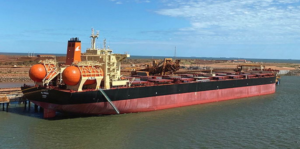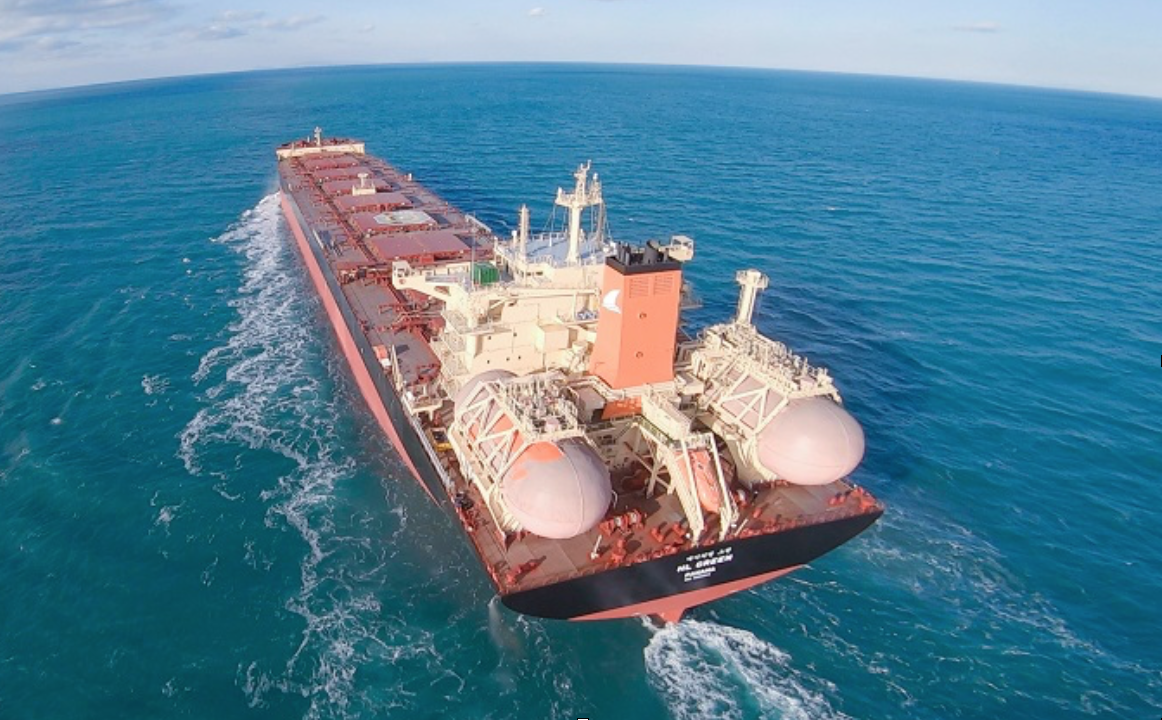HL Eco & HL Green
While much of the attention towards adoption of LNG propulsion is focused on the container, cruise and ro-ro sectors, the dry bulk and tanker industries are also slowly getting in on the act. Delivered in late 2020, sister ships HL Eco and HL Green are the world’s first dual-fueled Capesize bulk carriers.
- Built by Hyundai Samho Heavy Industries, Mokpo, South Korea
- Owned by H-Line Shipping, South Korea
- Long term chartered by POSCO Steel
- LOA 291.9m
- Beam 45m
- GRT 97,000 tons
- DWT 179,650 MT
- Main propulsion: Winterthur Gas & Diesel (WinGD) six-cylinder X72DF low-pressure DF two-stroke machinery which achieves Tier III compliance in gas mode, rated for a maximum continuous output of 16,180kW at 72.5 rpm.
- Speed 14 knots
- Flag: Panama
These pioneering vessels were built under a 2018 agreement signed between the South Korean Ministry of Oceans and Fisheries, POSCO, H-Line, and KOGAS. Each ship is equipped with two 1,600 cbm capacity LNG fuel storage tanks composed of 9% nickel steel, which exhibits proven fracture resistance even at the cryogenic temperatures required for LNG storage.
Hyundai Heavy Industries signed a joint development agreement with Lloyds Register in 2017 for the design of LNG-fuelled bulk carriers in the Capesize category. Subsequently, HL Eco and HL Green were developed under dual-class assignment with DNV notations alongside those of the Korean Register (KR).
By adopting LNG propulsion, these vessels are designed to achieve a 99% reduction in emissions of sulphur oxides (SOx) and particulate matter (PM), up to 85% in nitrogen oxides (NOx), and 30% in greenhouse gas (GHG), compared to the levels of most existing ships.
The price tag of each vessel at US$62 million, reflects a premium of around 24% for the dual-fuel specification relative to conventional diesel propulsion. The South Korean government is lending financial support to incentivise LNG propulsion development and at least partially off-set the additional cost of construction.

HL Green alongside loading in Port Hedland, Australia courtesy Pilbara Ports Authority
Two additional sister ships are set to be delivered by the end of March 2022. When all are operational, they will each make about 10 round trips annually hauling iron ore and coal from Australia to South Korea.
After being saved from bankrupt Hanjin Shipping in 2014, H-Line was acquired by South Korean private equity firm Hahn & Co. In 2016 Hahn & Co also added Hyundai Merchant Marine’s dry bulk operations to its portfolio.
Following the trend, in September 2020, Australian mining conglomerate BHP awarded Eastern Pacific Shipping a five-year time charter contract covering five LNG-fuelled, 209,000dwt Newcastlemax newbuild bulkers to carry iron ore from Western Australia to China.
Featured image Courtesy Hyundai SHI

